Cholesterol oxidation products are sensitive and specific blood-based biomarkers for Niemann-Pick C1 disease
- PMID: 21048217
- PMCID: PMC3170139
- DOI: 10.1126/scitranslmed.3001417
Cholesterol oxidation products are sensitive and specific blood-based biomarkers for Niemann-Pick C1 disease
Abstract
Niemann-Pick type C1 (NPC1) disease is a rare progressive neurodegenerative disorder characterized by accumulation of cholesterol in the endolysosomes. Previous studies implicating oxidative stress in NPC1 disease pathogenesis raised the possibility that nonenzymatic formation of cholesterol oxidation products could serve as disease biomarkers. We measured these metabolites in the plasma and tissues of the Npc1(-/-) mouse model and found several cholesterol oxidation products that were elevated in Npc1(-/-) mice, were detectable before the onset of symptoms, and were associated with disease progression. Nonenzymatically formed cholesterol oxidation products were similarly increased in the plasma of all human NPC1 subjects studied and delineated an oxysterol profile specific for NPC1 disease. This oxysterol profile also correlated with the age of disease onset and disease severity. We further show that the plasma oxysterol markers decreased in response to an established therapeutic intervention in the NPC1 feline model. These cholesterol oxidation products are robust blood-based biochemical markers for NPC1 disease that may prove transformative for diagnosis and treatment of this disorder, and as outcome measures to monitor response to therapy.
Figures
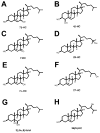
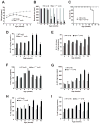
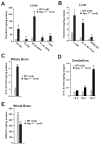
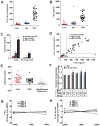


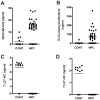
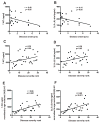

Comment in
-
Found in translation: a blood-based test for Niemann-Pick type C1.Biomark Med. 2011 Apr;5(2):201. doi: 10.2217/bmm.11.10. Biomark Med. 2011. PMID: 21473724 No abstract available.
Similar articles
-
Tau deletion exacerbates the phenotype of Niemann-Pick type C mice and implicates autophagy in pathogenesis.Hum Mol Genet. 2009 Mar 1;18(5):956-65. doi: 10.1093/hmg/ddn423. Epub 2008 Dec 12. Hum Mol Genet. 2009. PMID: 19074461 Free PMC article.
-
Niemann-Pick disease type C1 is a sphingosine storage disease that causes deregulation of lysosomal calcium.Nat Med. 2008 Nov;14(11):1247-55. doi: 10.1038/nm.1876. Epub 2008 Oct 26. Nat Med. 2008. PMID: 18953351
-
Targeting defective sphingosine kinase 1 in Niemann-Pick type C disease with an activator mitigates cholesterol accumulation.J Biol Chem. 2020 Jul 3;295(27):9121-9133. doi: 10.1074/jbc.RA120.012659. Epub 2020 May 8. J Biol Chem. 2020. PMID: 32385114 Free PMC article.
-
Diagnostic tests for Niemann-Pick disease type C (NP-C): A critical review.Mol Genet Metab. 2016 Aug;118(4):244-54. doi: 10.1016/j.ymgme.2016.06.004. Epub 2016 Jun 7. Mol Genet Metab. 2016. PMID: 27339554 Review.
-
An overview of the role of Niemann-pick C1 (NPC1) in viral infections and inhibition of viral infections through NPC1 inhibitor.Cell Commun Signal. 2023 Dec 14;21(1):352. doi: 10.1186/s12964-023-01376-x. Cell Commun Signal. 2023. PMID: 38098077 Free PMC article. Review.
Cited by
-
Neutral Sphingomyelinase-2 (NSM 2) Controls T Cell Metabolic Homeostasis and Reprogramming During Activation.Front Mol Biosci. 2020 Sep 4;7:217. doi: 10.3389/fmolb.2020.00217. eCollection 2020. Front Mol Biosci. 2020. PMID: 33088808 Free PMC article.
-
Diagnosis of niemann-pick C1 by measurement of bile acid biomarkers in archived newborn dried blood spots.Mol Genet Metab. 2019 Feb;126(2):183-187. doi: 10.1016/j.ymgme.2018.08.007. Epub 2018 Aug 24. Mol Genet Metab. 2019. PMID: 30172462 Free PMC article.
-
Mass Spectrometry in Advancement of Redox Precision Medicine.Adv Exp Med Biol. 2019;1140:327-358. doi: 10.1007/978-3-030-15950-4_19. Adv Exp Med Biol. 2019. PMID: 31347057 Free PMC article. Review.
-
Glycoprotein Non-Metastatic Protein B: An Emerging Biomarker for Lysosomal Dysfunction in Macrophages.Int J Mol Sci. 2018 Dec 24;20(1):66. doi: 10.3390/ijms20010066. Int J Mol Sci. 2018. PMID: 30586924 Free PMC article. Review.
-
7-Ketocholesterol in disease and aging.Redox Biol. 2020 Jan;29:101380. doi: 10.1016/j.redox.2019.101380. Epub 2019 Nov 14. Redox Biol. 2020. PMID: 31926618 Free PMC article. Review.
References
-
- Vanier MT, Millat G. Clin Genet. 2003;64:269–281. - PubMed
-
- Carstea ED, Morris JA, Coleman KG, Loftus SK, Zhang D, Cummings C, Gu J, Rosenfeld MA, Pavan WJ, Krizman DB, Nagle J, Polymeropoulos MH, Sturley SL, Ioannou YA, Higgins ME, Comly M, Cooney A, Brown A, Kaneski CR, Blanchette-Mackie EJ, Dwyer NK, Neufeld EB, Chang TY, Liscum L, Strauss JF, 3rd, Ohno K, Zeigler M, Carmi R, Sokol J, Markie D, O’Neill RR, van Diggelen OP, Elleder M, Patterson MC, Brady RO, Vanier MT, Pentchev PG, Tagle DA. Science. 1997;277:228–231. - PubMed
-
- Naureckiene S, Sleat DE, Lackland H, Fensom A, Vanier MT, Wattiaux R, Jadot M, Lobel P. Science. 2000;290:2298–2301. - PubMed
-
- Ory DS. Biochim Biophys Acta. 2000;1529:331–339. - PubMed
-
- Walkley SU, Suzuki K. Biochim Biophys Acta. 2004;1685:48–62. - PubMed
Publication types
MeSH terms
Substances
Grants and funding
LinkOut - more resources
Full Text Sources
Other Literature Sources
Medical
Molecular Biology Databases

